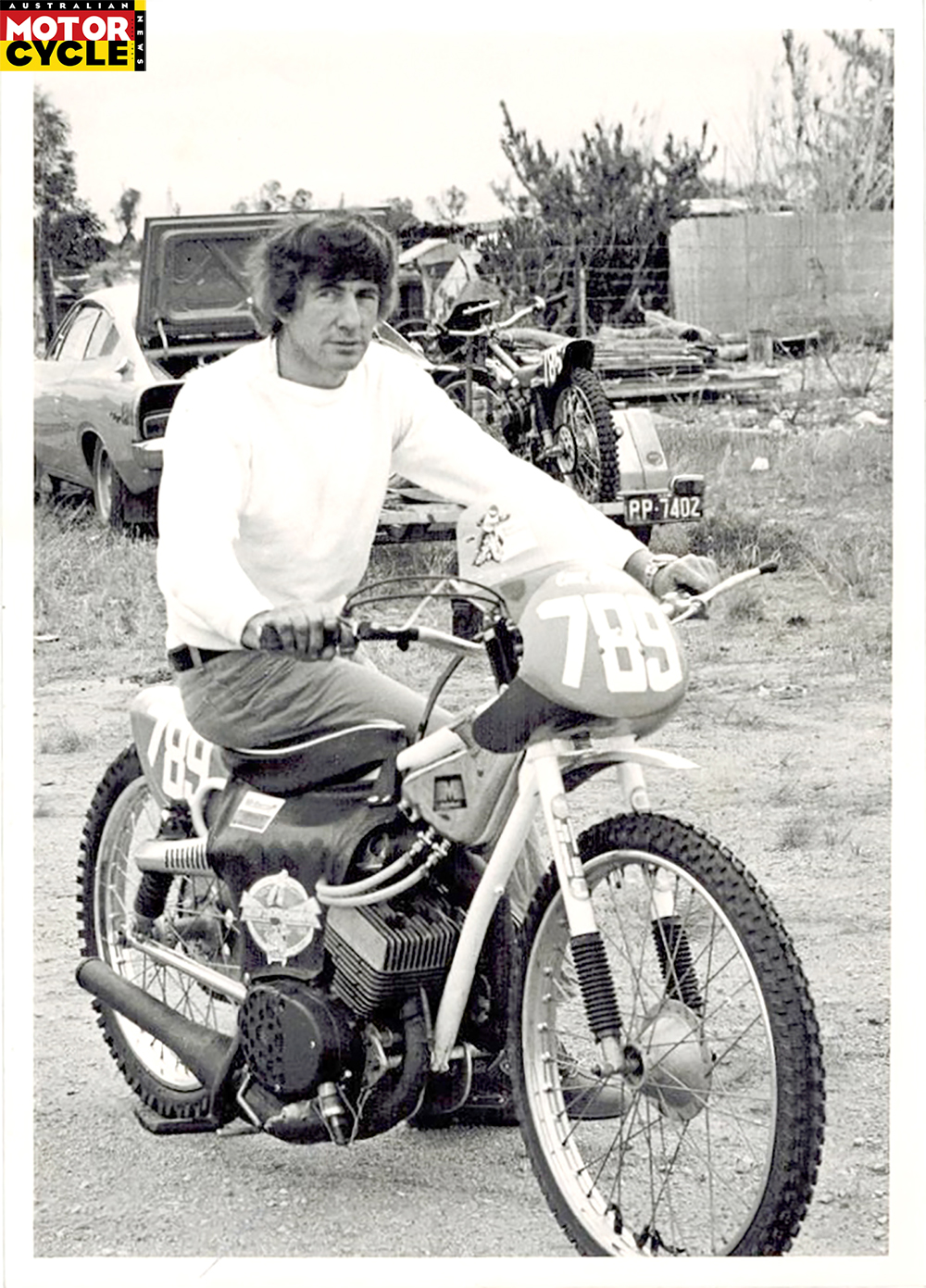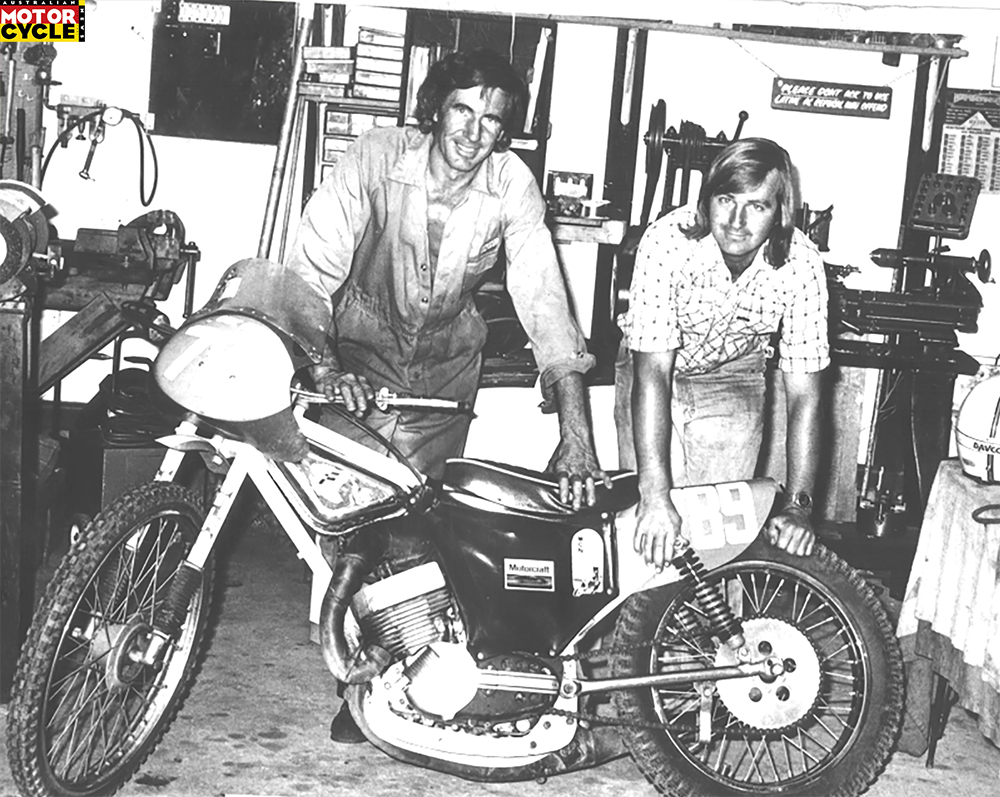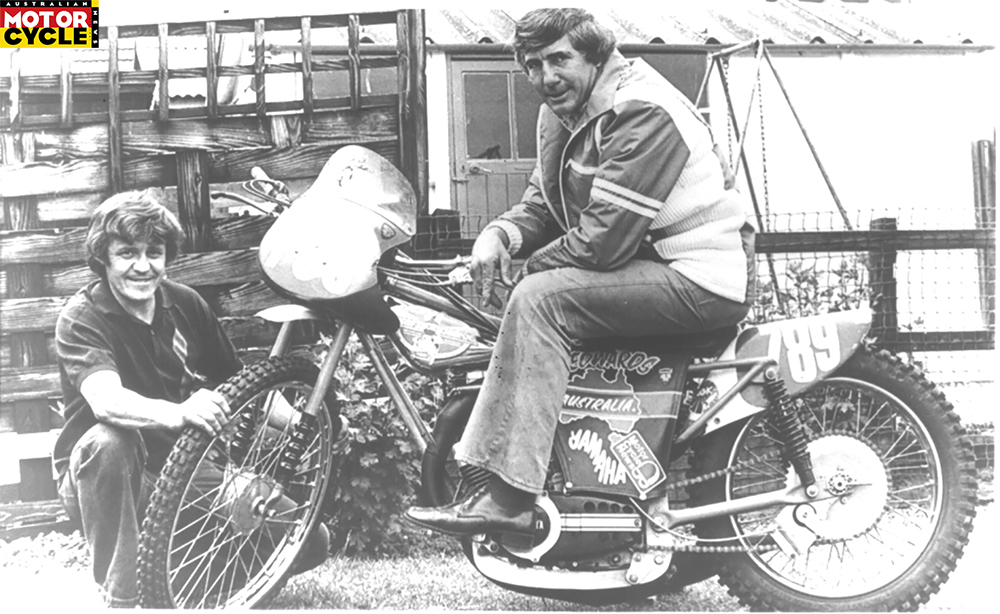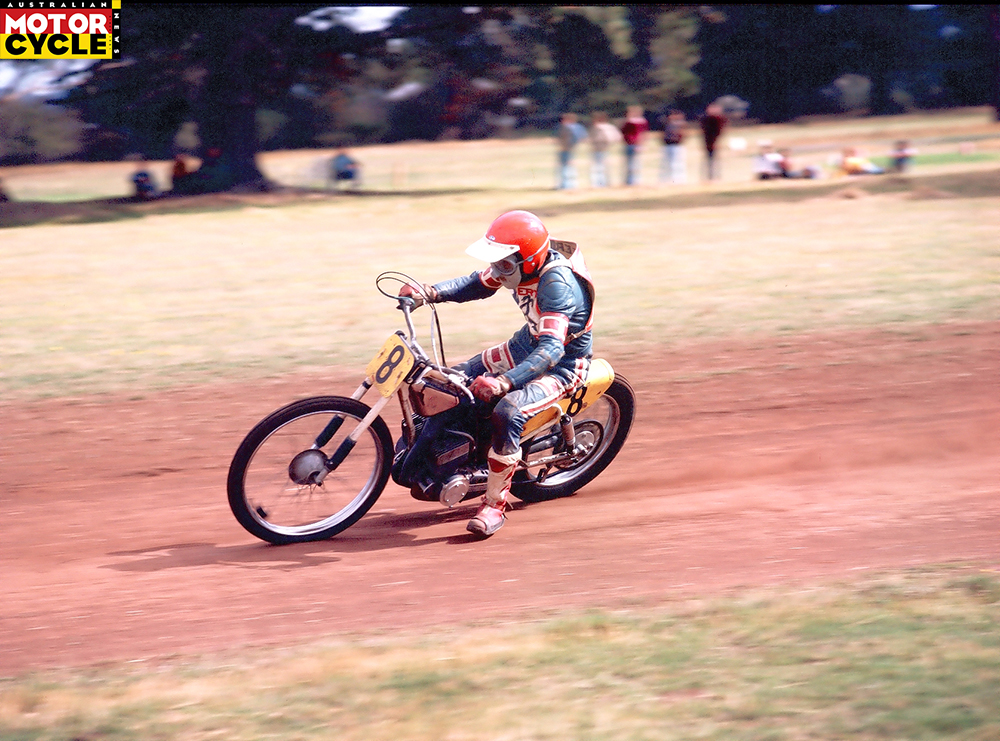Towards the end of his successful racing career, two-stroke aficionado Charlie Edwards grafted a Yamaha 347cc twin-cylinder, air-cooled two-stroke engine into a Hagon speedway chassis. This powerplant was originally developed for the Yamaha TZ350 production road racer, a 45kW (60hp) six-speed bike capable of 290km/h in GP racing trim, and was never intended to provide the low-down grunt required for dirt-track racing.
A life-threatening injury had forced a premature conclusion to Charlie’s prodigious tally of short circuit, scrambles, and speedway championships, though he continued to fettle bikes for mates such as John Langfield and Les Lewis. So it was that Charlie had his Yamaha Hagon at the two-day meeting at Bendigo Showground on Boxing Day in 1975.
Along with local heroes Clarry Jones and Les Lewis, English speedway luminary Nigel Boocock was billed as one of the stars of the meeting, however, Les had a broken leg and Nigel’s bike had been delayed in transit so, somewhat reluctantly, Charlie offered Nigel the Yamaha Hagon.

Initially, Nigel was less than impressed, claiming the bike was uncompetitive, though when Charlie pointed out that Nigel had never progressed beyond the first of the six gears at his disposal, Nigel appeared flummoxed. Casting his crutches aside, Les Lewis jumped aboard and, with his broken leg strapped to the TR3, provided Nigel with an earsplitting demonstration – the bike had no tacho – of the fistful of revs required to jump out of the gate cleanly in third gear.
As it was, Nigel never advanced beyond third gear, but that was enough during practice to send him arse over elbow along the top of the hardwood sleeper safety fence, breaking a large number of ribs.

The medics attempted to force Nigel to the hospital but the Yorkeshireman refused, saying: “The folks paid to see me fooking ride, and see me fooking ride they will.”
Fortunately, a set of Hagon forks was on hand to repair the damaged bike and, three shredded Baram rear hoops later, Nigel won the final. A defeated Jones offered to purchase Charlie’s bike, but by then Charlie had laid other plans, as Nigel was convinced the bike was just the ticket to win the 1976 World Long Track Championship to be held in Marienbad, Czechoslovakia.

Their plans were derailed when, only a week prior to their departure from London, Nigel demonstrated the bike at Coventry Speedway for officials of the British Auto Cycle Union (ACU). So appalled by the performance, particularly the unbelievable noise, the ACU expressed its dismay. Nevertheless, both Charlie and Nigel were surprised when they received notice from the German organisers stating their bike was banned from the world championships because it was too dangerous.
It remains a mystery how the German officials were alerted so quickly to the Australian bike’s potential, however, Charlie remains convinced that politics were in play. There was some scuttlebutt the ban could be voided should Nigel cede the ride to an alternate rider favoured by the ACU, but Nigel’s widow Cynthia dismisses such speculation.

“I think the bike was just too fast for the competition,” she told AMCN. “It was certainly very noisy.”
To this day, Charlie maintains that with Nigel’s experience aboard the Yamaha-powered flyer, he was a certainty to win his first world title had he been allowed to compete. After a frustrating six months abroad, Charlie returned home, where Jones had his long-held wish fulfilled by campaigning the bike at Bendigo. Yet, instead of replicating Nigel’s success, Clarry put the bike over the fence, wrecking the Hagon frame and scattering several lucky spectators.
Clarry came good with a new Elstar frame as a replacement, into which the Yamaha engine – by then producing almost 52kW (70hp) – was installed. When first campaigned at South Australia’s Morgan Mile in the hands of Rod Hunter, it established a long-standing track record at over 193km/h. Charlie then sold the bike to his old mate, Lewis who, with the local constabulary turning a blind eye to his effort, coaxed the bike to over 210km/h on the highway near his and Charlie’s hometown of Hay, NSW.

Before anyone came to any serious harm, Les converted the bike back to TR2 (250cc) specification.
“The 350 class had been dropped by then,” says Les. “Besides I was always more successful on the 250.”
In that configuration since 2016, the bike has entertained crowds at the Broadford Bike Bonanza in the hands of Rod Hunter.

Words & Photography PETER WHITAKER











